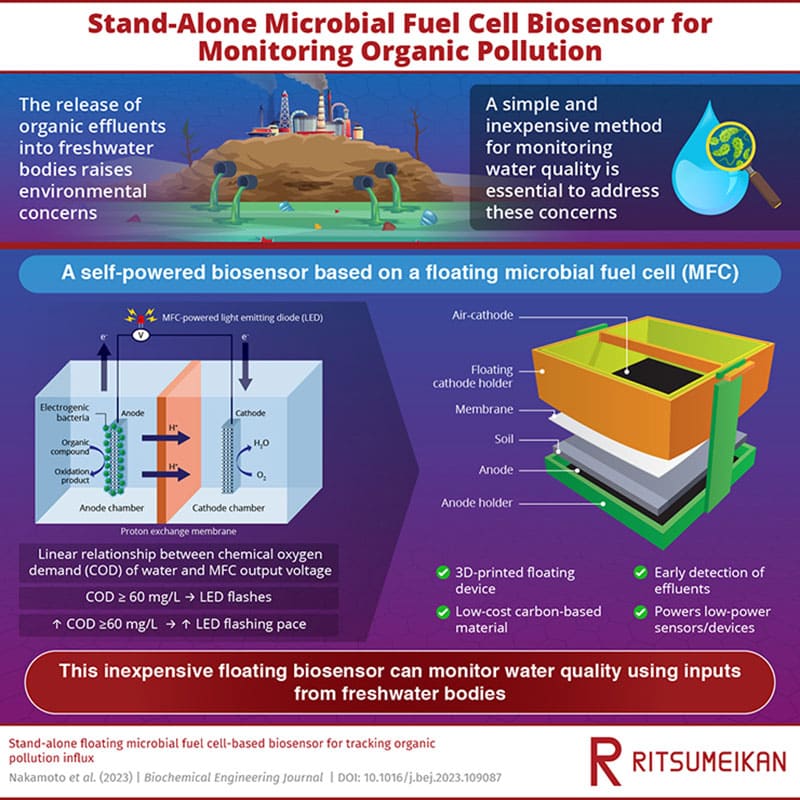Organic effluents discharged into freshwater bodies are a major concern for the health and sustainability of aquatic ecosystems. Organic effluents refer to any biodegradable material produced from the remains of plants and animals.
Unfortunately, the available methods used for water quality monitoring are complex, expensive, time-consuming, and require advanced technician skills, making it difficult to address this problem effectively.
In a remarkable breakthrough, researchers from Ritsumeikan University, Japan, have developed a self-powered, inexpensive, and floating biosensor for monitoring water quality at the input of freshwater lakes and rivers.
“We developed a self-powered, stand-alone, floating biosensor based on a microbial fuel cell (MFC) for early organic wastewater detection,” Kozo Taguchi, a professor in the College of Science and Engineering’s Department of Electrical and Electronic Engineering at Ritsumeikan University and leader of the study. “The MFC case was fabricated by a 3D printer, and the electrodes were fabricated from low-cost carbon-based materials.”
The microbial fuel cell (MFC) can generate electricity based on the biological bio-electric conversion capability of electrogenic bacteria – like Geobacter, Shewanella, and Pseudomonas – inside the cell. They consume organic matter in water and release electrons to the anode of the MFC.
The amount of electricity generated by the fuel cell is proportion to the amount of waste that is being consumed by the electrogenic microorganisms – which means that the power source itself acts as the sensor.

The team’s prototypes are based on inexpensive carbon-based materials and are designed to float along a river or on a lake surface. When the soil containing electrogenic bacteria decomposed the organic matter in the water, they converted the stored chemical energy into electricity. This electrical output was then used as a measure of the organic waste present in the contaminated water, providing a direct and efficient method of monitoring water quality.
The researchers improved the practicality of the biosensor used for monitoring freshwater ecosystems by adding a light-emitting diode (LED) to the floatable biosensor assembly. This LED was able to utilize the electricity generated by the electrogenic bacteria to indicate the level of organic contamination in the water samples.
The LED would start flashing when the chemical oxygen demand (COD) of the water sample exceeded the threshold value of 60 mg/L and would flash at an increased pace when the COD exceeded the threshold value considerably. This visual cue provided by the LED is a simple yet effective way for anyone to understand the level of contamination in the water without requiring complex analysis.
Additionally, the FMFC biosensor produces its own electricity; it requires no external power supply, making it a self-sustaining solution for monitoring water quality. This feature makes it particularly useful in early detection systems that monitor influxes of organic wastewater in freshwater bodies. The biosensor can provide a timely warning, helping to prevent potential environmental disasters.
Journal reference:
- Trang Nakamoto, Dung Nakamoto, Kozo Taguchi. Stand-alone floating microbial fuel cell-based biosensor for tracking organic pollution influx. Biochemical Engineering Journal, 2023; DOI: 10.1016/j.bej.2023.109087New window
